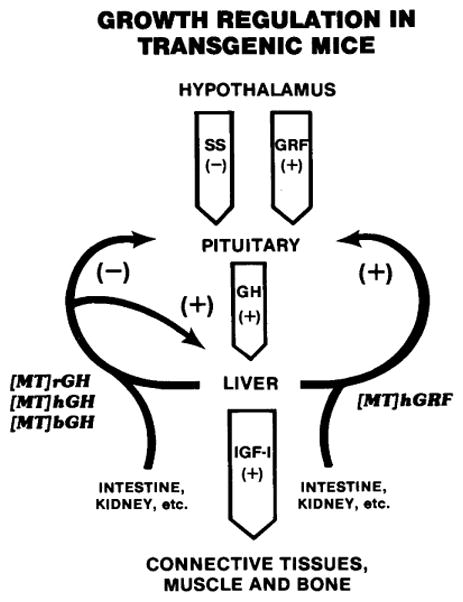Fig. 6.

Growth hormone (GH) cascade. The hypothalamus produces the neuropeptides somatostatin (SS) and growth hormone releasing factor (GRF) that inhibit and stimulate, respectively, the release of GH. Growth hormone stimulates hepatocytes to produce insulinlike growth factor I (IGF-I) which acts on peripheral tissues to stimulate growth. Growth hormone also may stimulate peripheral tissues directly. Growth hormone and IGF-I are believed to influence the cascade by a negative feedback effect on the hypothalamus and pituitary. Metallothionein fusion genes are expressed in the liver and several other tissues. Therefore, their products are not controlled by the normal endogenous regulatory mechanism. [MT] indicates the MT promoter was responsible for production of the hormone. The origin of the hormone gene was rat (r), human (h), or bovine (b). (+) and (−) indicate positive and negative influences, respectively.
